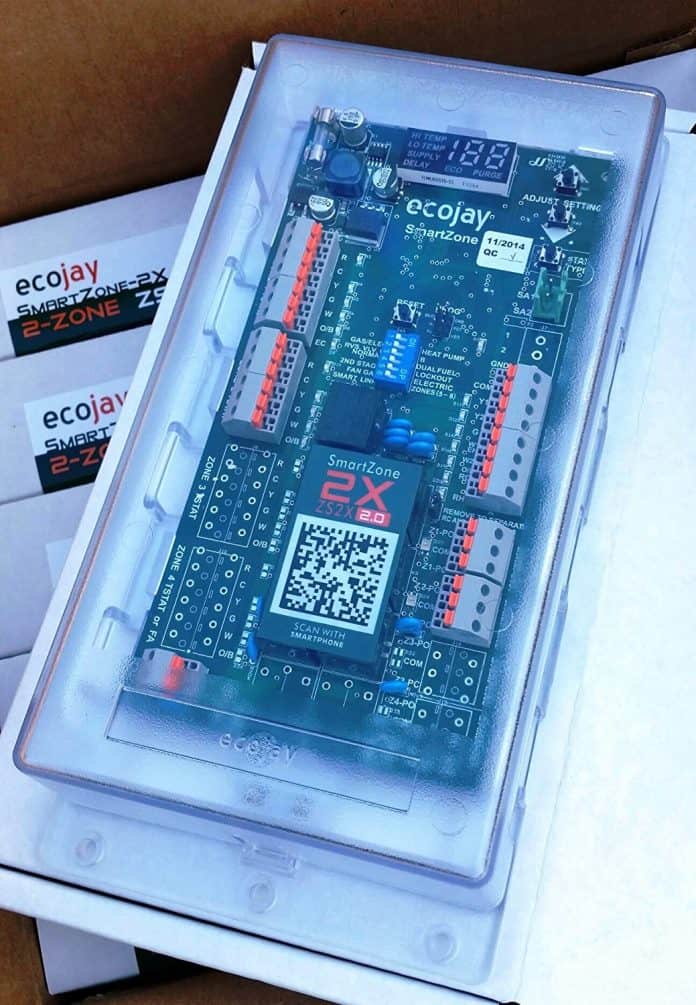If you are trying to regulate the airflow in your air conditioning or heating system, you need to have an HVAC zone damper. These zone control systems will help control the heating and cooling system – where the air is going and how much is flowing in what zone and these can be automatic or manual. Ensure that you choose the right option for your needs, so keep reading on to find out more.
Here is our complete comprehensive guide to help you pick the ideal HVAC zone damper for your needs.
Table of Contents
Top 8 Best HVAC Zone Dampers
If you are looking at HVAC zone dampers, then you might not know what is what. However, here are just 8 of the top models that you need to look at for both controllers and dampers, such as:
-
SmartZone-4X Control 4 Zone Controller
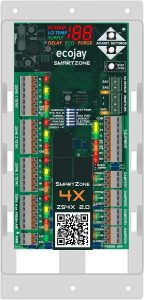
For those who need the zone controller and not the damper, then this is the right option. This model can operate anywhere from 4 zones up to 20 zones, and it will work with any thermostat that you might have installed, including Nest, Honeywell, EcoBee, and much more. This zoning system is also universally compatible so that it will work with heat pumps, electric, and even gas systems without issues.
This zone system is going to be easy to use and simple to install and it has various features like economizer, fresh air control and more.
Pros
Cons
Verdict
If you have a smart thermostat and if you want a zone panel that you can install easily and set it up faster, then this is great.
-
SmartZone-2X HVAC Controller
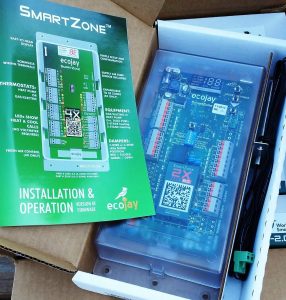
Another great option for a controller is this model by SmartZone and it can only control 2 zones. It has a temperature sensor built-in so that it can protect your equipment easily and ensure efficient staging. This will also work with any system that you have installed, which could be multi or single stage.
This would also work with any HVAC system that you might have installed like dual fuel, heat pump, electric, or even gas.
Pros
Cons
Verdict
If you are going to do the installation yourself, then this controller would be easy to use and the instructions will be simple to follow.
-
SmartZone 8″ Round Professional-Grade
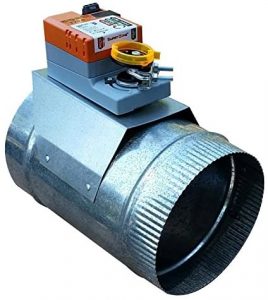
This damper is going to be very simple for you to install and this is an 8” round model. This is made of commercial quality construction and is professional grade. It has a full seal style blade seal that keeps any leakage low and it is extremely reliable.
Also, the motor is high torque and lower power to keep your entire system operating in top shape for a long time. It is 24 voltage and the damper can be used outside, but the motor should be placed inside.
Pros
Cons
Verdict
For those who want a damper that would be high-quality and professional-grade, then this is the perfect one to choose.
-
Honeywell 6” Round Automatic Damper
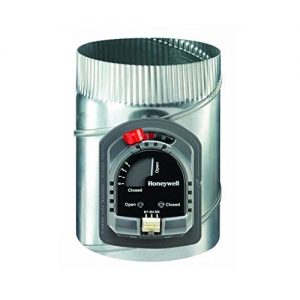
For those who want an automatic damper, then this 6” round model is going to suit your needs. It is made of high-quality steel to ensure that it is durable and it can be controlled by any system. This one allows you to make the necessary adjustments with the control on the front and there is a screen where you can see the current level of it being open or closed.
Pros
Verdict
If you don’t want something heavy that you would have to install, then this damper would be great since it is automatic.
-
SunCourt Closed 8” Motorized Damper
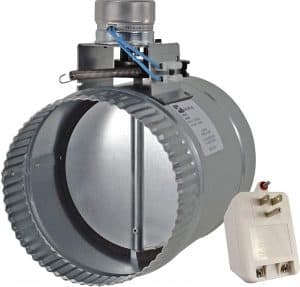
For those who have a small budget this motorized damper is going to suit all of your needs. This will help to prevent any build-up of moisture and keeps your home without any bad odors. Also, this model lets you individually control each temperature for every room that is in the home.
It can be used for general control of the ventilation as well and you can control what you want, which can save on energy. This is one of the most economical damper options for cooling and heating.
Pros
Cons
Verdict
If you are hoping to control the temperature of every single room individually, then this model would be great for that and is good for a small budget.
-
SunCourt 6” ZoneMaster Airflow Control Damper
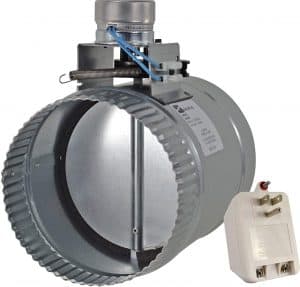
Another great option for those with small budgets is this 6” model that allows you to easily customize the temperature and airflow in all of the rooms. The damper can be easily adjusted from 0 to 90° and it can work with any of your current zone controllers. It can also be a standalone device using the transformer that would be included.
This would be extremely quiet and you won’t have to worry about hearing it in the basement or even the attic if that is your concern.
Pros
Cons
Verdict
If you don’t need something complicated or something that will operate all of the time, then this should be a model that you put on your list to check out more.
-
Vent Systems 6” Back Flow Shutter Damper
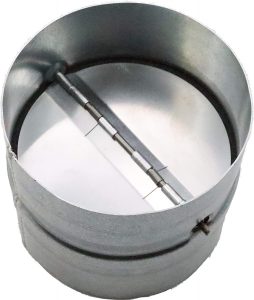
This is a one way damper that would prevent backflow and it is going to be easy to use in any 6” ducts. The springs that are used in this model are very strong and they can be used either horizontally or even vertically depending on your needs. This is great to be used in air conditioning systems or even heating systems to keep the air from going back into the ducts.
This will be very easy to install, and it will help keep your airflow from going the wrong way and causing issues.
Pros
Cons
Verdict
For those who don’t want their air conditioning or the heating system to have any backflow and want to save money, this is a good model.
-
HFS 6” Back Draft Damper
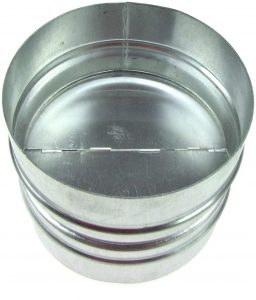
If you are looking for a damper that would help prevent backdraft, this model would be great. This is 6”, but the brand also has it in 4” and 8” depending on the size of your duct. The springs are strong, and they would keep the air from going back the wrong way, which saves you money and energy.
This has blades made of aluminum alloy, and it is going to be very easy to install without adding any electrical systems to it.
Pros
Cons
Verdict
If you don’t want to waste money by having a backdraft in your duct system, then you want to buy and install this model.
HVAC Zone Dampers Buying Guide
When it comes to HVAC zone dampers, it can be a complicated and confusing decision to decide what model to purchase. However, if you know what it is, it can be made easier, which is why you need to know the features to look for and much more. You should know exactly what the zone damper for your HVAC system is and what it can do.
Go ahead and do your research to ensure you are buying the right one, especially if you are installing your HVAC system. Here is our complete guide to help you with making the right purchase for all of your needs.
Why Zone Your HVAC
If you have a large home and a few floors, you will want to have an HVAC zone damper installed. This will help to keep all of the various floors warm without having one colder or warmer than any other. This will be great to keep your central HVAC system operating properly, energy-efficient, and directing the air where it needs to go.
Those who have different rooms and individuals who like a wide variety of temperatures and climates in their rooms would be great. It can help you easily change up and customize the temperature for each room separately. This will help you keep the energy low in rooms that aren’t in use and the temperature to each persons liking in the remainder of the rooms.
You don’t want to walk around your home or go upstairs to find that it is warmer than downstairs, especially when it is time to sleep. Make sure that you are thinking about this when you are considering having one installed.
What is a Zone Damper?
You would also need to know what a damper is, and this is a plate or a valve that would regulate or stop the air flowing within a duct, air handler, VAV box, chimney, or any other equipment handling air. This might be used to cut off the central heating, cooling, or even air conditioning to any rooms in your home that aren’t in usage.
Also, this would help with regulating the climate and temperature in each room individually. This can be done using an automatic or manual system, and the manual ones need to be operated by turning the handle on the outside of your duct. The automatic ones are used to regulate the air-conditioning constantly, and they are operated using pneumatic or electric motors controlled by your thermostat.
Factors to Consider When Buying an HVAC Zone Dampers
You will need to think about the various factors and criteria that would help you pick the best HVAC zone damper for your home. There is plenty to consider, such as:
- Compatible zone control panel – You need to consider whether or not the damper you are looking at will work with your zone control panel. Some will work with any control panel, system, or thermostat out there, so check this out.
- Thermostats – Another thing you want to think about is what type of thermostat brands the damper will work with. The majority of the zone systems will be compatible with the most common and popular thermostat options, including the smart ones you might have installed in your home.
- Duct size – You also need to consider how wide your duct will be so that you can get the right damper. You want the damper to be a bit smaller than the duct’s size, so make sure that you measure it properly. You also need to ensure that you know how much duct you will have to take care of and how many rooms would need a damper installed.
- Damper size – The next factor to consider is the damper’s size and whether or not it will fit in the duct. There are a wide variety of sizes that you would pick and choose from that would fit into the duct. They come in 4”, 6”, and 8” models, so make sure to pick the one that will fit the best into your ducts and be installed easily.
- Airflow rate – Another factor that you want to think about is the air flow rate, so ensure you check this out. You want a high airflow rate, but that won’t use as much power as others. Also, think about finding one that allows you to adjust it easily without digging deep into the system.
- Material – You also should think about the material that the damper is made of since you want it to be of the highest quality. A few of the top materials to look for are aluminum alloy or even stainless steel since they will be durable. Not only will they be durable, but they will also be resistant to corrosion or rust.
- Sensors – Also, think about the sensors you would have and how they would be seen. You want a screen that would help you make the right adjustments to the system, and it should be easy to operate.
Make sure to consider all of these factors when picking and buying the right hvac zoning damper for your needs. The more you know about what makes a big difference, then the better model you can get for your system.
Types of Dampers in HVAC Systems
There are huge arrays of HVAC damper types that you need to be aware of to make the right decision. Here are a few of the top ones to know about, such as:
- Butterfly dish – These are flat dampers that have been designed for less maintenance and high efficiency. The blades are hinged so that the duct will be filled accurately so all airflow will be restricted. They can completely block all airflow when needed, and they can come with numerous blades if you want.
These will also be great for preventing any back-draft so that the air is only allowed to go one direction. This is great for heating and fire prevention, and they cover precipitators, heaters, scrubbers, baghouses, and oxidizers.
- Blade dampers – These are probably the most common ones, and the blades are thin plates made of metal that are used to regulate the flow of air in various equipment for handling air. These are used in ducts, chimneys, and HVAC systems, and they have opposed options where the blades move in the opposite directions. These are great for control and metering, and they have great strength, higher sealing capacity, and make less noise.
- Guillotine – If you want something with a great seal, then this model will be the one you want to go for. They are put in place to prevent any airflow from going anywhere, and it is often used where isolation is needed. This can be used when duct entry is required or if regular maintenance is being undertaken.
- Louvers – If you want something that will respond quickly and have strong properties for blocking air, this is the type to go for. They use flat blades that are hinged, and they can fill any duct size. These are some of the most commonly used dampers in any HVAC system.
- Inlet vane is the final type, and they are commonly used for fan inlet applications since they provide better pressure control and material flow. These are also sometimes used on HVAC systems where the facility needs to have complete ventilation regulation. These dampers are created with a central hub with numerous blades around it and use swirls, giving better control methods.
You always need to make sure that you know what types of HVAC zone dampers are available. If you know the various types, you would be able to decide which one will fit the needs you have.
FAQ
-
How do I know if my HVAC zone damper should be closed or open?
You need to adjust every damper to give the perfect amount of airflow to every room. If the rooms are overly warm for the individuals, open the dampers until they feel sufficiently cooler. If the rooms are feeling too cool, then you are going to want to close them. However, it would help if you made small adjustments, and you shouldn’t ever close or open the damper completely.
-
How do I know what thermostat the models are going to be compatible with?
If you have a smart thermostat, you are probably wondering if it would be compatible with the dampers you are looking at. The majority of the dampers will be compatible with all of the thermostats, but you want to ensure it is going to work with the installed control panel.
-
How loud will the damper be?
If you are worried about the noise, you shouldn’t be because these are often placed within the ducts. They aren’t going to be overly noisy, and you will hardly be able to tell they are there since they aren’t louder than your normal HVAC system.
-
Should I hire an expert to handle the installation of the HVAC zone dampers?
If you don’t have any experience or knowledge in handling the HVAC zone dampers, you will want to hire experts. Not only will they handle the installation, but they can also help you with deciding what option to go for in your home.
-
How do I know if my home has HVAC zone dampers installed already?
If you live in a more recently constructed home, then it is likely that they are already installed. However, if you aren’t sure, you should have an HVAC expert come into your home and undertake an inspection. They will be able to let you know if these are installed in your home and, if so, where they are located, and more. If they aren’t, then they can help you with planning the installation for your system.
Final Thoughts
If you are looking at customizing or controlling your HVAC system using a damper, you need to pick the right one. You should think about what type of system you have, along with the thermostat compatibility and even the duct and damper size. The more you know about this, the easier your decision will be when it comes to deciding which model you want to buy and have installed.

